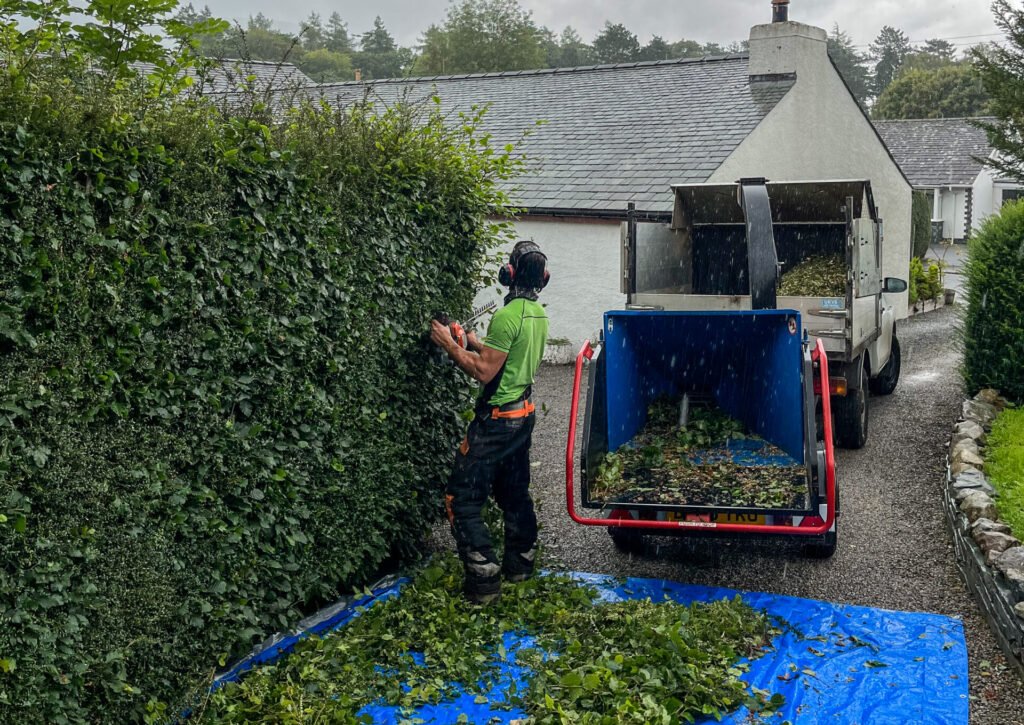A Practical Guide to Pruning Beech Trees, Hedges, Copper Beech & Pendula Varieties.
Pruning Beech:
Fagus sylvatica (Beech) are admired for their smooth silver-grey bark, elegant branching, and vibrant seasonal colour. Whether you grow them as majestic specimen trees, neat hedges, or ornamental varieties such as copper beech or pendula beech, proper pruning is essential for maintaining their health and beauty. While beech is naturally tidy, strategic pruning encourages stronger structure, improves airflow, and enhances foliage density. In this guide, we’ll look at when and how to prune different forms of beech to get the best results.
Why Prune Beech?
Beech trees generally require minimal pruning compared to many other species. However, pruning serves several purposes:
- Maintaining shape in hedges
- Controlling size in ornamental varieties
- Removing damaged or diseased branches
- Enhancing structural strength in large trees
- Improving light penetration and airflow
Each type—standard beech, copper beech, beech hedges, and pendula beech—has slightly different needs.


Pruning Common Beech Trees– Fagus sylvatica
When to Prune
The best time to prune large beech trees is late summer. By this time, the tree has finished most of its growth for the season, and pruning wounds seal more effectively. Pruning in winter is possible, but beech sap rises early, and cuts may be slow to heal or more prone to disease.
How to Prune
- Remove dead, diseased, or crossing branches first. These can cause long-term structural issues if ignored.
- Maintain the natural shape. Beech trees have graceful, sweeping forms. Avoid over-cutting or forcing an artificial silhouette.
- Thin carefully. Beech dislikes heavy reduction; instead, remove small, select branches to improve airflow and reduce weight.
- Use clean, sharp tools. Smooth cuts reduce the risk of infection.
Because beech can be sensitive to heavy pruning, it’s best to work gradually over several years if major size reduction is required.
Pruning Beech Hedges
Beech hedges are among the most popular formal hedges because they retain their coppery winter leaves, giving year-round interest. They also provide shelter for wildlife, nesting birds and work well as a backdrop for a border or dry loving perennials and plants.

When to Prune Hedges
For best density, prune twice a year:
- Late June (mid-summer trim): the main pruning to shape and control growth (Make sure you check that there are no nesting birds before trimming.)
- Early September (optional): a light tidy to keep the hedge sharp through winter
Avoid pruning after early autumn, as new growth may not harden before frost.
How to Prune
- Aim for a trapezoid shape. Keep the base slightly wider than the top to ensure light reaches all levels.
- Use hedge trimmers for uniformity, but hand secateurs are helpful for shaping edges.
- Don’t cut back into old wood if the hedge is older; beech doesn’t regenerate strongly from very hard cuts.
- Start pruning early in the hedge’s life. Young plants respond well to formative pruning and develop thick, full foliage.
Pruning Copper Beech (Purple Beech) Fagus sylvatica ‘Purpurea’
Copper beech has the same growth habits as green beech but has distinct purple foliage that deepens in summer. Its pruning needs are nearly identical.
Key Tips
- Prune in late summer for trees, and mid-summer for hedges.
- Avoid heavy cuts—copper beech can be slow to respond.
- Remove inward-growing branches to maintain an open canopy and emphasise colour.
- For hedges, the same two-trim schedule as green beech applies.
Copper beech tends to show pruning scars slightly more, so clean cuts are especially important.
Pruning Weeping Beech Fagus sylvatica ‘Pendula’
Pendula beech is prized for its dramatic cascading branches that form umbrella-like or fountain-shaped silhouettes.
How to Prune Pendula Beech
Prune lightly, focusing on:
- Removing dead or rubbing branches
- Lifting the canopy if needed by removing lower branches
- Encouraging desired structure by selectively shortening or guiding branches
Avoid cutting the long, sweeping limbs unless absolutely necessary; they give the tree its signature look. If trained early, pendula beech can be shaped beautifully with minimal intervention later.
Final Thoughts
Beech trees reward thoughtful pruning with improved health, striking structure, and lush seasonal colour. Whether shaping a hedge, refining a copper beech’s silhouette, or maintaining the elegance of a pendula form, gentle and timely pruning is the key. By understanding the natural growth habits of each type, you can ensure your beech trees thrive for generations to come.
Need a little help pruning? Contact us for a free quote.
